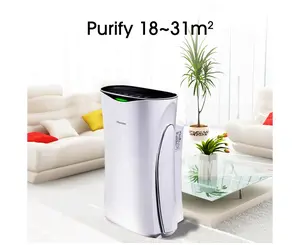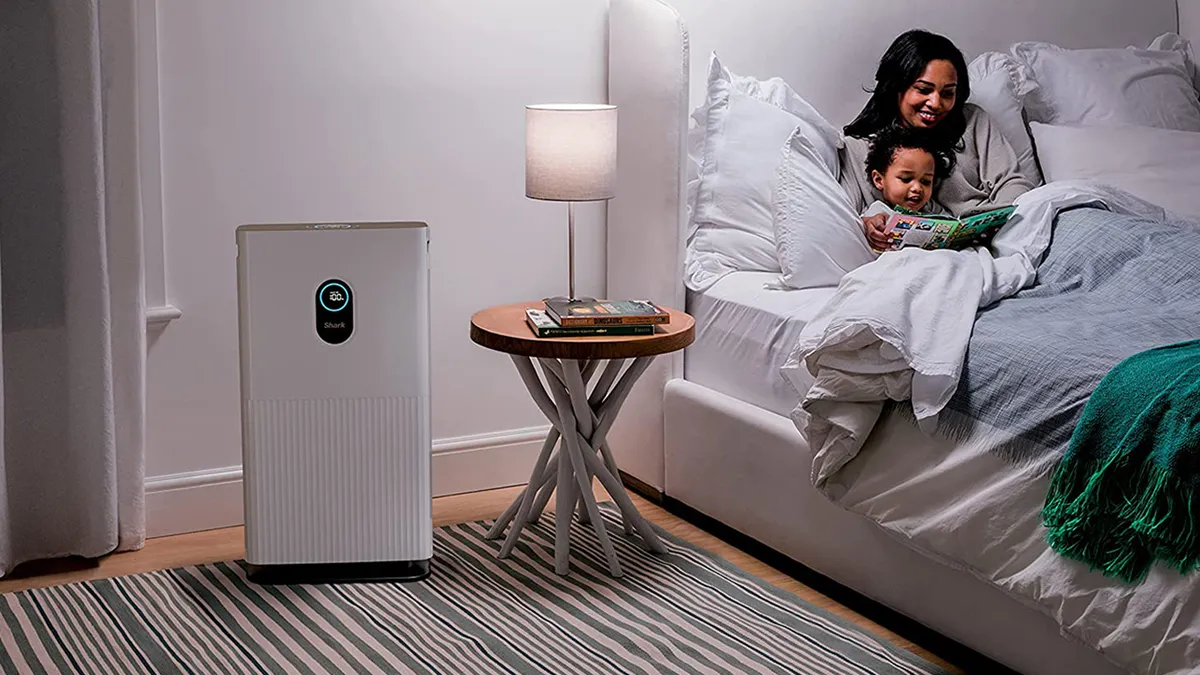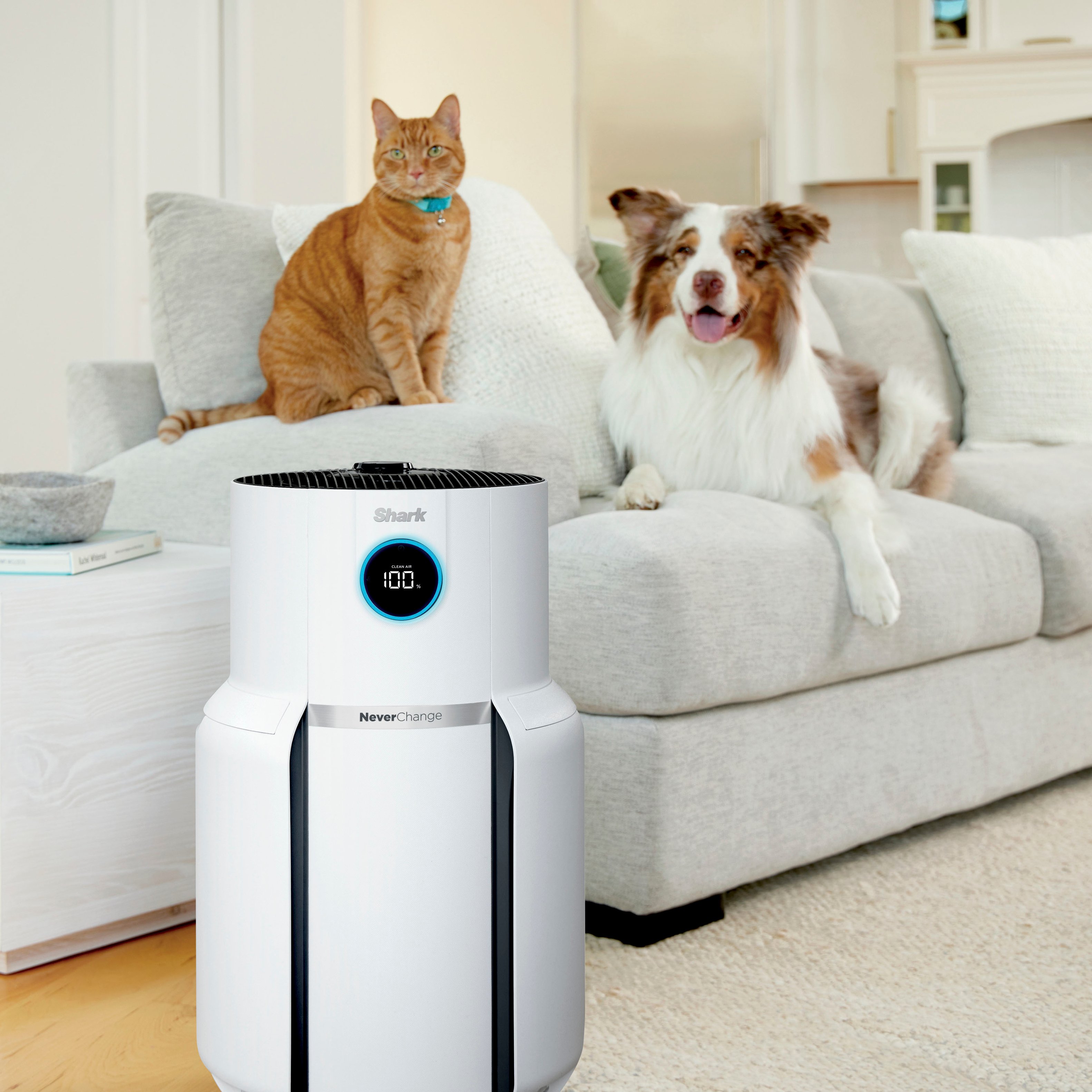Air Purifiers: Clearing the Path to Cleaner Indoor Air
Explore the transformative power of air purifiers in creating healthier indoor environments. From allergen reduction to virus control, discover how these devices elevate air quality, providing relief for allergies and asthma while contributing to overall well-being.
Unveiling the Benefits of Air Purifiers for Improved Indoor Air Quality

In the quest for healthier indoor environments, air purifiers emerge as unsung heroes, tirelessly working to cleanse the air we breathe. These devices, equipped with advanced filtration technologies, play a crucial role in removing pollutants and allergens, fostering a fresher and more breathable atmosphere.
Air purifiers employ various mechanisms to rid the air of contaminants. High-efficiency particulate air (HEPA) filters capture microscopic particles like dust, pollen, and pet dander, while activated carbon filters neutralize odors and gases. Some models integrate UV-C light to eliminate airborne germs and bacteria. The synergy of these technologies ensures a comprehensive approach to air purification.
Why Choose an Air Purifier?
- Allergen Reduction:
- Air purifiers are champions in reducing allergens, making them indispensable for individuals prone to allergies. By trapping and eliminating particles that trigger allergies, they create a haven for easier breathing.
- Particle Removal:
- Dust, smoke, and other airborne particles are no match for the efficiency of air purifiers. They actively remove these contaminants, contributing to a cleaner and healthier living space.
- Odor Elimination:
- Cooking smells, pet odors, and other unpleasant scents vanish as air purifiers utilize activated carbon filters to neutralize and eliminate unwanted odors.
- Virus and Bacteria Control:
- In an era where health is paramount, air purifiers with UV-C light technology add an extra layer of defense by targeting and deactivating viruses and bacteria.
- Improved Respiratory Health:
- For individuals with respiratory conditions, such as asthma or chronic obstructive pulmonary disease (COPD), air purifiers create an environment with reduced airborne irritants, promoting better respiratory health.
Considerations for Selection
- Room Size:
- Select an air purifier suitable for the size of the room to ensure optimal performance.
- Filtration Technology:
- Consider the specific filtration needs based on allergens, pollutants, or odors prevalent in your environment.
- Noise Level:
- For spaces where quiet operation is crucial, choose an air purifier with a noise level compatible with your preferences.
- Energy Efficiency:
- Opt for energy-efficient models to maintain air quality without excessive energy consumption.
- Maintenance Requirements:
- Evaluate the ease of filter replacement and overall maintenance to ensure hassle-free operation.
What is a air purifier used for?
An air purifier is a device designed to improve indoor air quality by removing or reducing contaminants and pollutants from the air. The primary purposes and uses of air purifiers include:
- Particle Removal:
- Air purifiers are effective at capturing and removing airborne particles such as dust, pollen, pet dander, mold spores, and other particulate matter. This is particularly beneficial for individuals with allergies or respiratory conditions.
- Allergen Reduction:
- Individuals with allergies often benefit from air purifiers as they help reduce the concentration of allergens in the air. Common allergens like pollen and pet dander can be effectively filtered out, providing relief for allergy sufferers.
- Odor Elimination:
- Air purifiers equipped with activated carbon filters can absorb and neutralize odors from cooking, pets, smoke, and other sources. This contributes to a fresher and more pleasant-smelling indoor environment.
- Virus and Bacteria Control:
- Some air purifiers incorporate UV-C light technology or other antimicrobial features to target and deactivate viruses, bacteria, and other microorganisms. This can be especially beneficial for reducing the spread of airborne pathogens.
- Improved Respiratory Health:
- For individuals with respiratory conditions such as asthma or chronic obstructive pulmonary disease (COPD), air purifiers create an environment with reduced airborne irritants, promoting better respiratory health and potentially reducing the frequency of respiratory symptoms.
- Mold Prevention:
- Air purifiers can help prevent the growth and spread of mold by capturing mold spores before they settle and develop into mold colonies. This is crucial in damp or humid environments where mold growth is a concern.
- Smoke and VOC Removal:
- Air purifiers with specific filters can effectively remove smoke particles and volatile organic compounds (VOCs) from the air. This is beneficial for homes with smokers or in environments where indoor air quality is compromised by pollutants.
- Improved Sleep Quality:
- Cleaner air can contribute to better sleep quality. Air purifiers create an environment with reduced allergens and irritants, providing a more conducive atmosphere for restful sleep.
- Environmental Control:
- Air purifiers contribute to maintaining a healthier and more comfortable indoor environment by controlling the levels of pollutants. This is particularly important in urban areas or locations with high outdoor pollution.
- Overall Well-being:
- Using air purifiers is a proactive measure to create a healthier living space. By reducing the concentration of airborne contaminants, individuals may experience improved overall well-being and comfort.
Do air purifiers get rid of smells?
Yes, air purifiers, particularly those equipped with activated carbon filters, can effectively help get rid of smells. Activated carbon is a highly porous material that has the ability to adsorb (not absorb) various gases and odors, trapping them within its porous structure. This makes activated carbon filters effective in neutralizing and eliminating a wide range of odors, including:
- Cooking Odors:
- Air purifiers can help eliminate lingering cooking smells, such as those from frying, spices, or strong foods.
- Pet Odors:
- The presence of pets in a home can lead to odors from pet dander, urine, and other sources. Air purifiers with activated carbon filters can reduce or eliminate these odors.
- Smoke Odors:
- Whether from cigarettes, cigars, or cooking smoke, air purifiers can help remove and reduce the lingering smell of smoke.
- Household Odors:
- Various household odors, such as those from garbage, cleaning products, or paint, can be addressed by air purifiers with activated carbon filters.
- Volatile Organic Compounds (VOCs):
- Some air purifiers are designed to target and remove VOCs emitted by household products, furniture, and building materials, contributing to a fresher indoor environment.
Can I use air purifier with window open?
Yes, you can use an air purifier with the window open, but the effectiveness of the air purifier may be influenced by several factors related to outdoor air quality and the specific conditions of the indoor environment. Here are some considerations:
- Outdoor Air Quality:
- If the outdoor air quality is good, bringing fresh air into the room can contribute to a healthier indoor environment. In such cases, using an air purifier alongside open windows can help filter out any outdoor pollutants that may enter.
- Allergens and Pollen:
- Opening windows may introduce outdoor allergens such as pollen into the indoor space. While an air purifier can help reduce these allergens, it's essential to consider the specific allergens present in the outdoor air.
- Source of Outdoor Pollution:
- If there are sources of outdoor pollution, such as traffic emissions or industrial activities, using an air purifier with the window open can help filter out pollutants. However, the effectiveness depends on the type and concentration of outdoor pollutants.
- Temperature and Humidity:
- Consider the temperature and humidity levels when deciding to open windows. In some climates, opening windows may lead to increased humidity or uncomfortable temperatures. Air purifiers can assist in maintaining a comfortable and healthy indoor environment.
- Indoor Pollutant Sources:
- Identify and minimize indoor pollutant sources. If there are specific indoor pollutants, such as smoke or volatile organic compounds (VOCs), addressing these sources is important for overall air quality.
- Air Purifier Placement:
- Place the air purifier strategically to optimize its performance. Position it in a way that allows it to efficiently capture and filter pollutants, taking into account the location of windows and potential pollutant sources.
- Ventilation Practices:
- In addition to using an air purifier, practice good ventilation by opening windows during times when outdoor air quality is favorable. This can help exchange indoor air with fresh outdoor air.
Do air purifiers use a lot of electricity?
The electricity consumption of air purifiers varies depending on factors such as the size and type of the air purifier, the speed or setting it operates on, and the specific features it offers. Here are some considerations regarding the electricity usage of air purifiers:
- Size and Capacity:
- Larger air purifiers designed for larger rooms or spaces typically have higher power ratings and may consume more electricity. Smaller units for smaller rooms generally have lower power consumption.
- Energy-Efficient Models:
- Some air purifiers are designed to be energy-efficient, incorporating features such as variable fan speeds, automatic sensors, and energy-saving modes. Choosing an energy-efficient model can help minimize electricity consumption.
- HEPA and Other Filters:
- The type and number of filters in an air purifier can impact its energy usage. High-efficiency particulate air (HEPA) filters, while effective, may require more energy to push air through compared to less dense filters.
- Continuous Operation:
- Air purifiers are often designed to run continuously for optimal air quality. If you run your air purifier continuously, it will consume more electricity than if you use it intermittently.
- ENERGY STAR Certification:
- Some air purifiers carry the ENERGY STAR certification, indicating that they meet specific energy efficiency guidelines. Choosing an ENERGY STAR-certified model can be a good way to ensure a more energy-efficient operation.
Should I put air purifier near air conditioner?
Yes, placing an air purifier near an air conditioner can be beneficial for overall indoor air quality, especially if the air conditioner is not equipped with advanced air filtration features. Here are some considerations:
- Complementary Functions:
- Air purifiers and air conditioners serve different purposes but can complement each other. Air conditioners are designed to cool and dehumidify the air, while air purifiers focus on removing airborne particles, allergens, and contaminants.
- Enhanced Filtration:
- Air purifiers typically include filters designed to capture particles such as dust, pollen, pet dander, and mold spores. Placing an air purifier near the air conditioner can enhance filtration by capturing additional airborne particles that the air conditioner's filter may not effectively remove.
- Improved Indoor Air Quality:
- While air conditioners help circulate and cool the air, they may not address indoor air quality concerns comprehensively. Air purifiers can target specific pollutants, odors, and allergens, providing a more thorough approach to creating a healthier indoor environment.
- Reducing Allergens:
- If you suffer from allergies, placing an air purifier near the air conditioner can help reduce allergens in the air, providing relief from common allergy triggers such as pollen and pet dander.
- Placement Considerations:
- Position the air purifier strategically to ensure efficient air circulation. Ideally, place it in a location where it can capture and filter a significant volume of air. Avoid obstructing the airflow from the air conditioner.
- Regular Maintenance:
- Both the air purifier and the air conditioner should undergo regular maintenance. Clean or replace filters in both devices according to the manufacturer's recommendations to ensure optimal performance.
Is air purifier good for asthma?
Yes, air purifiers can be beneficial for individuals with asthma. Here are several ways in which air purifiers can help manage asthma symptoms:
- Allergen Reduction:
- Air purifiers are effective at reducing common asthma triggers such as dust mites, pet dander, pollen, and mold spores. By capturing and removing these allergens from the air, air purifiers create an environment with fewer potential triggers for asthma attacks.
- Particle Removal:
- Asthma symptoms can be triggered or exacerbated by airborne particles, including fine particulate matter. Air purifiers with high-efficiency particulate air (HEPA) filters can efficiently capture and remove particles from the air, providing relief for individuals with asthma.
- Smoke and Odor Elimination:
- Air purifiers equipped with activated carbon filters can help eliminate smoke particles and neutralize odors. This is particularly relevant for individuals with asthma who may be sensitive to smoke or strong odors.
- Virus and Bacteria Control:
- Some air purifiers incorporate UV-C light or other technologies to target and deactivate viruses and bacteria. This can be beneficial for individuals with asthma, as respiratory infections can exacerbate symptoms.
- Improved Indoor Air Quality:
- Asthma symptoms can worsen in environments with poor air quality. Air purifiers contribute to overall indoor air quality improvement by reducing the concentration of pollutants and irritants.
- Reduced Exposure to VOCs:
- Volatile organic compounds (VOCs) from household products and building materials can contribute to poor indoor air quality. Certain air purifiers are designed to address VOCs, providing additional benefits for individuals with asthma.
- Better Sleep Quality:
- Cleaner air can contribute to better sleep quality, and adequate sleep is important for individuals with asthma. Air purifiers can create a more comfortable and allergen-free sleeping environment.
- Controlled Humidity Levels:
- Some air purifiers are equipped with features to control humidity levels. Maintaining optimal humidity levels can help prevent the growth of mold, a common asthma trigger.
What are the advantages and disadvantages of air purifiers?
Advantages of Air Purifiers:
- Improved Indoor Air Quality:
- Air purifiers effectively reduce the concentration of airborne pollutants, allergens, and particles, leading to enhanced indoor air quality.
- Allergen Reduction:
- Individuals with allergies benefit from air purifiers, which can significantly reduce allergens like pollen, pet dander, and mold spores.
- Odor Elimination:
- Air purifiers with activated carbon filters can effectively eliminate and neutralize odors from cooking, pets, smoke, and other sources.
- Respiratory Health:
- For individuals with respiratory conditions such as asthma, air purifiers can create an environment with fewer irritants, contributing to better respiratory health.
- Virus and Bacteria Control:
- Some air purifiers equipped with UV-C light or other antimicrobial features can target and deactivate viruses, bacteria, and other microorganisms.
- Mold Prevention:
- Air purifiers can help prevent the growth and spread of mold by capturing mold spores before they settle and develop into colonies.
- Enhanced Sleep Quality:
- Cleaner air can contribute to better sleep quality by creating a more comfortable and allergen-free environment.
- Versatility:
- Air purifiers come in various sizes and designs, making them suitable for different spaces, from bedrooms to larger living areas.
- Energy Efficiency:
- Many air purifiers are designed to be energy-efficient, and some models carry the ENERGY STAR certification.
Disadvantages of Air Purifiers:
- Initial Cost and Maintenance:
- Quality air purifiers can have a relatively high initial cost, and ongoing maintenance, including filter replacement, adds to the overall expense.
- Noise Level:
- Some air purifiers, especially those with higher fan speeds, can generate noise. While many models are designed for quiet operation, noise may be a consideration for some users.
- Limited Coverage Area:
- The effectiveness of an air purifier is often limited to a specific coverage area. It's essential to choose an appropriately sized unit for the room.
- Ozone Emission:
- Certain types of air purifiers, particularly those that use ionization or ozone generation, may emit ozone as a byproduct. Ozone can be a respiratory irritant and may have health implications.
- Dependency on Electricity:
- Air purifiers require electricity to operate. While their energy consumption is generally low, they contribute to overall household energy usage.
- Not a Complete Solution:
- While effective at reducing airborne particles, air purifiers are not a substitute for good ventilation, regular cleaning, and addressing specific sources of indoor pollution.
- Filter Replacement Costs:
- Regular filter replacement is necessary for optimal performance, and the cost of replacement filters can add up over time.
- Effectiveness Against Some Pollutants:
- Air purifiers may be less effective against certain pollutants, such as volatile organic compounds (VOCs), which may require additional measures for control.
Air purifiers are indispensable devices designed to enhance indoor air quality by reducing pollutants, allergens, and contaminants. Leveraging advanced filtration technologies, such as HEPA filters and activated carbon, air purifiers efficiently capture and eliminate particles, providing relief for allergies and asthma. With the ability to neutralize odors, control humidity, and even target viruses and bacteria, these devices contribute to creating healthier, more comfortable indoor environments. While their benefits include improved sleep quality and a reduction in respiratory irritants, users should consider factors such as initial costs, ongoing maintenance, and specific features to choose the right air purifier for their needs. Ultimately, air purifiers play a vital role in promoting well-being by transforming spaces into havens of purified, breathable air.








